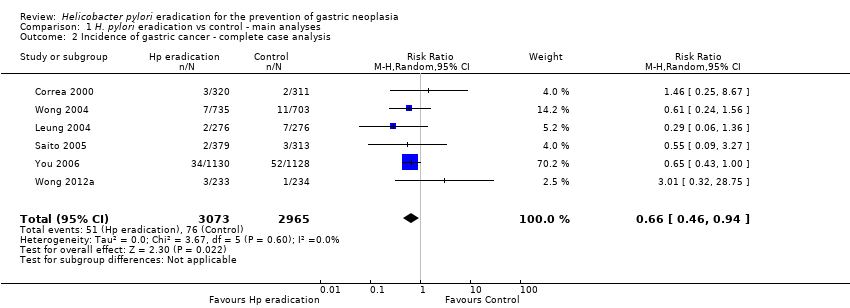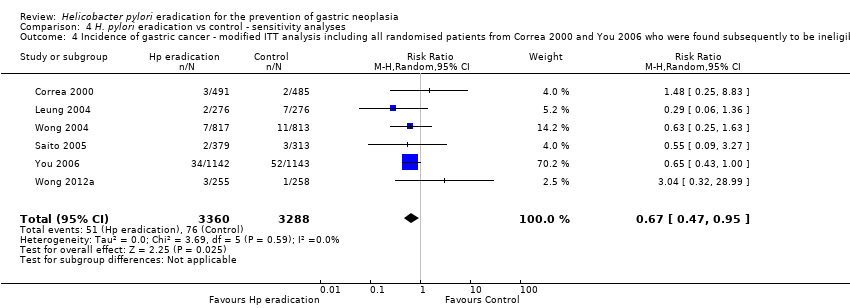Contenido relacionado
Revisiones y protocolos relacionados
Alexander C Ford, Yuhong Yuan, David Forman, Richard Hunt, Paul Moayyedi | 6 julio 2020
Alexander C Ford, Kurinchi Selvan Gurusamy, Brendan Delaney, David Forman, Paul Moayyedi | 19 abril 2016
Paul Moayyedi, Shelly Soo, Jonathan J Deeks, Brendan Delaney, Adam Harris, Michael Innes, R Oakes, Sue Wilson, A Roalfe, Cathy Bennett, David Forman | 16 febrero 2011
Yuhong Yuan, Alex C Ford, Khurram J Khan, Javier P Gisbert, David Forman, Grigorios I Leontiadis, Frances Tse, Xavier Calvet, Carlo Fallone, Lori Fischbach, Giuseppina Oderda, Franco Bazzoli, Paul Moayyedi | 11 diciembre 2013
Luís Eduardo S Fontes, Ana Luiza C Martimbianco, Carolina Zanin, Rachel Riera | 12 febrero 2019
Javier P Gisbert, Sam Khorrami, Fernando Carballo, Xavier Calvet, Emili Gené, Enrique Dominguez‐Muñoz | 19 abril 2004
Joshua Z Goldenberg, Christina Yap, Lyubov Lytvyn, Calvin Ka‐Fung Lo, Jennifer Beardsley, Dominik Mertz, Bradley C Johnston | 19 diciembre 2017
Nghia Nguyen, Bing Zhang, Stefan D Holubar, Darrell S Pardi, Siddharth Singh | 30 noviembre 2019
Brendan Delaney, Alex C Ford, David Forman, Paul Moayyedi, Michelle Qume | 7 octubre 2009
Clare Donnellan, Cathy Preston, Paul Moayyedi, Nav Sharma | 17 febrero 2010
Respuestas clínicas Cochrane
Kurinchi Gurusamy | 9 septiembre 2019
















